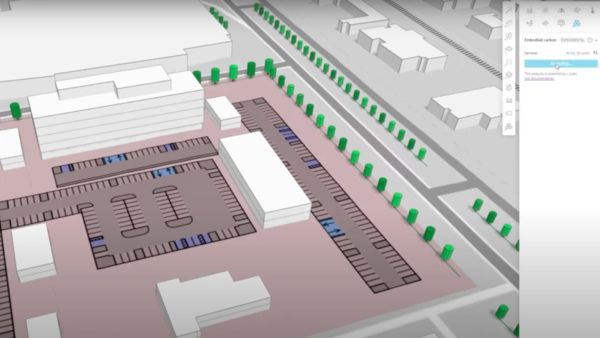The industry’s increasing focus on BIM has led to a proliferation of BIM events and conferences. We asked technology consultant Paul Wilkinson, construction lawyer Sarah Rock from law firm RPC, and architect Allister Lewis, who is also co-founder of the South BIM Hub, to give us an insider’s view on what to prioritise.
What do you look for before you sign yourself up?
Paul Wilkinson Good speakers make for a good BIM event. It’s best if different speakers can speak knowledgeably about broad industry policy issues or give some practical case study experiences (ideally, ones that I may not have heard before). I also tend to look at who else might be going – Twitter mentions by the #UKBIMCrew, for instance, can help identify gauge other people’s interest in the event.
Sarah Rock The topic being discussed. If the event description states that there will be a review of Level 3 BIM projects in the UK I know that this will probably be a waste of time! I also look for quality of speakers and I am always keen to hear and meet new members of the #UKBIMCrew.
Allister Lewis Speakers who have direct experiences to share on their projects. As an architect delivering BIM on my projects I want to know how people do certain things. I find with BIM there is a lot to manage and information overload is one of them. A good speaker who can distil this down is always preferable!
What could the organisers of BIM events do better?
PW Price them appropriately. Some BIM events are extortionate! The construction sector is dominated by SMEs, and many of us can’t afford £400 (and the transport and opportunity costs of spending a day away from our jobs) for a one-day event. ThinkBIM and many of the BIM4 groups have shown that it is possible to run top-quality events at prices that aren’t a deterrent.
If it’s BIM for beginners, make it clear. If it’s pushing the BIM boundaries, again, make it clear. Someone just setting out on their BIM journey can rapidly get confused by speakers spouting unexplained Three Letter Acronyms (TLAs): BEPs, EIRs, PASs, ISOs, IFCs, CDEs, LoDs, GSL, dPOW, etc.
Finally, make it easy for people to network, both physically and online. Breaks, workshops, and, yes, #BIMbeers can help break down barriers and get people talking. Decent wi-fi, a Twitter hashtag and some power sockets help the online sharers.
SR Address the events to different audiences. I am very aware that a lot of my clients are new to BIM so going to a high level presentation, which misses out the crucial initial explanation of what BIM actually is, can be daunting and off-putting. We still need the high level presentations to move things forward but organisers need to know their audience and recognise the need to be relevant to the widespread market.
AL This is tough as there are so many events that are catering for a whole set of needs. For me, I think that ensuring each event has a defined purpose and clear set of outcomes for an audience will enable the most to be gained by the attendees.
Do you have any advice for someone delivering a BIM-related presentation?
PW If BIM is an abbreviation for building information model, why use the term “BIM model”? Someone once said “every time you say ‘BIM model’, a fluffy kitten dies”. So that’s two more I’ve killed…
More seriously, speakers should try to find out how BIM-aware their audience is, what backgrounds they come from, and what tools and processes they use. Focusing on, say, Revit (other BIM authoring tools are available) ignores the wider BIM collaboration and that’s at least 80% people and process, not technology – and yet many presentations fixate on the software.
SR Know your audience. It is too easy to dive into jargon and knowledge that you assume is shared. A lot of the industry are still just getting their heads around BIM and presenting everything you know wrapped up in technical acronyms may make you sound impressive but is not always beneficial to the audience. A lot of people who don’t understand the basics may feel intimidated to ask questions so the speaker should make sure the talk is accessible.
AL Keep it clean and clear, reduce the text to the bare minimum – you are doing the talking and the slides should be images/diagrams etc that support what you are saying. Also try to make it fun, engaging and real – BIM is a brilliant opportunity but it can be a bit dry without real world examples of things going wrong.
Do you ever find yourself playing BIM bingo?
PW I have been known to count fluffy kittens, or how many times the Bew/Richards wedge is shown.
SR Not exactly BIM bingo but there is usually some sort of sub-conversation running on Twitter! My favourite comments usually revolve around @oatfedgoat commenting on the light bouncing off of @CaseyRutland’s head!
AL There is a risk of the mind drifting, however, if the session is clear in what will be discussed then it can keep audience engaged. Also, different tools should be used, such as voting controls for audience questions (I am trialling this this week at work), Q&As and workshops to mix things up. Different formats are also good – I like the idea of speed dating with experts so that you have an opportunity to talk to people quickly for five minutes and then move on.
Do you have any good or bad experiences you’d like to share?
PW At more than one event speakers have seriously overrun, insisting on reading everything right through to the bitter end. I wouldn’t have minded if they had been interesting, but one turned into a prolonged sales pitch for a product that was irrelevant to most of an audience hungry for lunch.
One of the most memorable BIM presentations I’ve seen was by Tekla’s Duncan Reed who used a ThinkBIM “Pecha Kucha” session (20 slides, 20 seconds each) to talk about BIM and sustainability by reference to a collection of music CD covers: “… and if we don’t get it right, as the Kaiser Chiefs put it, I Predict a Riot”.
SR @jsethedwards gave one of the best talks I have heard at Arup’s Open BIM Mic Night. It was refreshingly honest and broke down some of the restrictive jargon. I have also enjoyed presenting with and attending talks by @ollyBIMT – his enthusiasm for the subject really grabs the audience’s attention.
AL The best examples of good talks allow you to take something back to the office that will convince people of the benefits of BIM as there are still a lot of people to convince. Practical figures help to convince people that BIM will give us the tools to do a better job quicker than we currently are.















